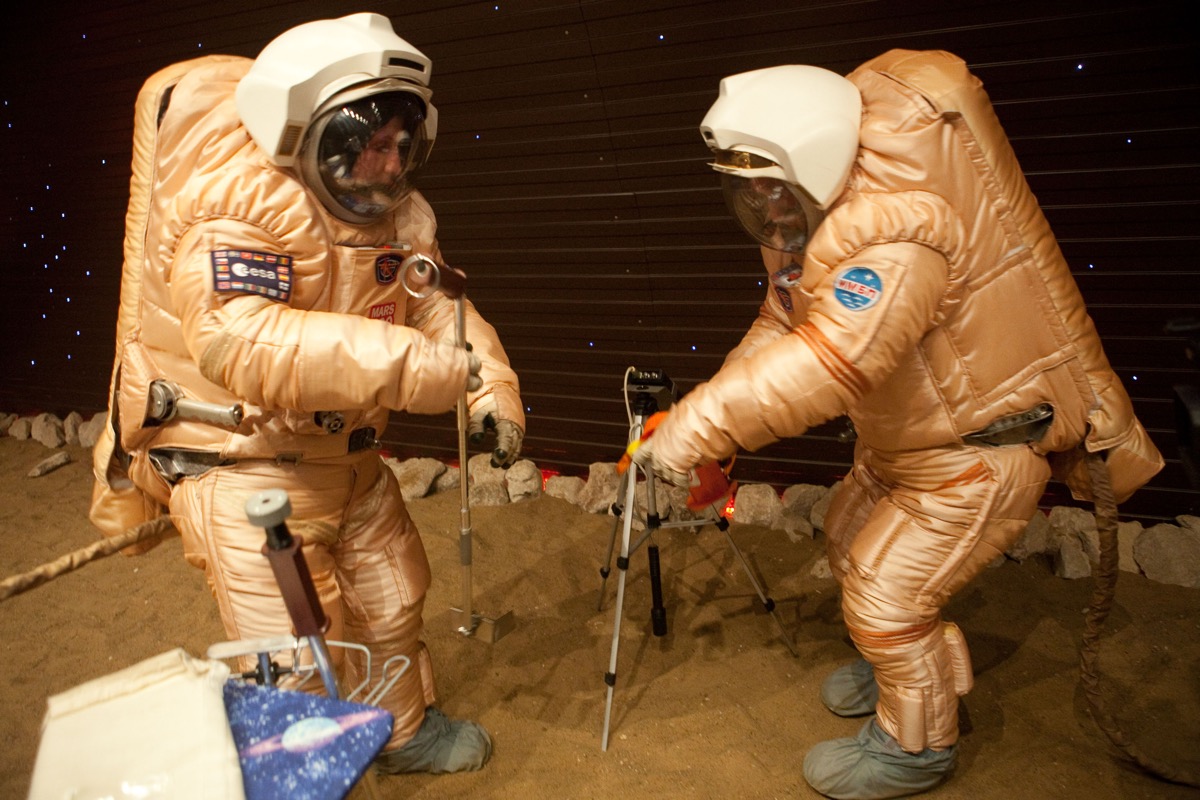These Microbes May Hitch a Ride with Humans to Mars: Why That Matters

When humans finally journey to Mars, they won't be the only living things on board the spacecraft; millions upon millions of microbes that live on and in these pioneering astronauts' bodies will also be along for the ride.
Understanding how these microbes can grow, spread and adapt in the spacecraft's confined conditions is important for ensuring the health of the astronauts who participate in such future long-term space missions. And a new study offers insight into how these bacteria might behave in such an environment.
Six men who lived as "Marsonauts" for more than a year inside a mock spacecraft in Moscow have revealed how the multitude of microbes that live on astronauts' bodies can adapt and spread throughout a confined environment, according to the study. [The 7 Most Mars-Like Places on Earth]
"In addition to potential health risks for the crew, some of these microorganisms could have a negative impact on spacecraft, as they grow on and might damage spacecraft material," co-researcher Petra Schwendner, from the University of Edinburgh in Scotland, said in a statement.
For 520 days (the approximate time it would take to reach Mars), a crew of six male Marsonauts lived and worked in a mock spacecraft in Moscow, which was designed to simulate conditions that astronauts would experience during missions to Mars. Specifically, the crew studied how microorganisms such as bacteria adapted to the confined conditions and spread throughout the spacecraft.
"Until now, little was known about the influence of long-term confinement on the microorganisms that live inside habitats that may one day be used to travel to other planets, and whether the structure of the microbiota changes with time," Schwendner said in the statement.
Over the course of the study — which lasted from June 3, 2010, to Nov. 5, 2011 — the Marsonauts followed a strict diet and schedule, all while remaining completely isolated in the mock habitat, called Mars500. Using air filters and swabs, the crew collected 360 microbial samples from the air and different surfaces inside the spacecraft.
Sign up for the Live Science daily newsletter now
Get the world’s most fascinating discoveries delivered straight to your inbox.
The researchers found that, in addition to human habitation — each person has his or her own microbiota, or population of microbes — confinement largely contributed to the type of bacteria present.
The study found that microbes associated with humans, including Bacillusand Staphylococcus, were the most prevalent throughout the habitat, suggesting that the crew was the main source of the microbial dispersal. For example, Staphylococcus — a type of bacteria commonly found in the nose and respiratory tract and on the skin, and some strains of which are known to cause skin infections — was likely dispersed via skin flakes shed by the crew, according to the statement.
In addition, the crew also detected unique bacterial signatures in different areas of the spacecraft. Communal areas, sleep areas, the gym and the bathroom, for example, had the highest numbers and greatest diversity of bacteria; the lowest levels of bacteria were found inside the medical module (where medical and psychological experiments took place and sanitary conditions were required), according to the study.
The researchers also saw the effect of cleaning agents on the bacteria. "Although we located some microbial hotspots, where the number of bacteria was much higher than in other areas, we were quite relieved to find that the overall bacterial counts were within the acceptable limits," Schwendner said. "Due to appropriate cleaning measures, the microbial community inside the habitat was under control at all times with no or little risk for the crew."
A high level of bacterial diversity is generally considered healthy. However, the study also showed that over time, bacterial diversity dropped, and certain opportunistic, stress-tolerant pathogens became more prevalent. Such a scenario could create a problem for astronauts enduring long-duration isolation, because these types of bacteria could make the astronauts sick, according to the researchers.
"Countermeasures may be required to avoid development of highly resistant, adapted microorganisms and a complete loss of microbial diversity," Schwendner said.
Their findings were published Oct. 4 in the journal Microbiome.
Original article on Live Science.









